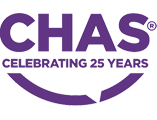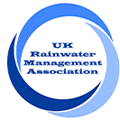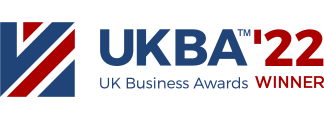Best practice guide to filtration on Rainwater Harvesting Systems
04/11/2023

04/11/2023
Rainwater is ideal for reuse as a sustainable water supply and can help to prevent unnecessary wastage of mains water which is treated to drinking water quality. Rainwater is naturally clean and free of debris when it falls from the sky meaning relatively little filtration is required to make it safe for reuse within a building. Rainwater harvesting allows the collection of rainfall from the roof area of a building to be reused as a non-potable water supply. Rainwater harvesting commonly supplies outlets, including toilets and urinals, irrigation systems, vehicle wash plants, cooling, and other manufacturing processes.
Rainwater harvesting is rising in popularity around the UK to help tackle water scarcity issues, especially in the Southeast where the prospect of water shortages is becoming more likely. The estimated demand for water supplies in the UK is predicted to reach an additional 4 billion litres of water per day by 2050 according to the Environment Agency. This is in addition to the 16 billion litres of water that is already consumed around the country on a daily basis.
As rainwater harvesting systems collect from the roof area, any debris on the surface of the roof space can easily get washed into roof drainage points and reach the rainwater harvesting system. Debris on roof spaces commonly consists of leaves from surrounding trees or bird feathers. After a prolonged period of no rainfall, small amounts of sediment particles can also build on the surface of the roof which can be washed into the system after a downpour of rain.
When specifying rainwater harvesting on a new project, getting the right system with the best filtration is important to minimise maintenance requirements for the end user and for the protection of building users.

Rainwater harvesting systems have a pre-tank filter to prevent any larger debris from entering the storage tank. The pre-tank filter of a rainwater harvesting system consists of a fine mesh that allows water to pass through whilst trapping any unwanted debris. The pre-tank filter on a rainwater harvesting system is 90% efficient meaning that only 10% of water is sent to drain in the filtration process. It is important that the pre-tank filter and rainwater harvesting system are maintained every six months to ensure the filter mesh does not become blocked with excessive amounts of debris.
The best practice for the specification of a rainwater harvesting system is to ensure that the pre-tank filter can be maintained from ground level. This ensures that the pre-tank filter can be maintained without needing two trained engineers due to confined space requirements. The pre-tank filter on a Stormsaver rainwater harvesting system can easily be accessed from ground level via a handle.
Stormsaver Rainwater Harvesting Systems also come equipped with an integrated pre-tank filter within the underground storage tank meaning that separate pre-tank filter chambers are not required which could complicate the installation process. Stormsaver pre-tank filters achieve 1000-micron filtration (1 millimeter).
The image above shows the difference between a pre-tank filter that is not able to be maintained from ground level and the Stormsaver Pre-Tank Filter which can easily be maintained by just one engineer as the handle for the pre-tank can easily be accessed from ground level.
Stormsaver rainwater harvesting systems use a floating suction filter to ensure that rainwater is collected from the cleanest part of the main storage tank. Floating suction filters consist of a fine mesh filter and a floating device to ensure the filter does not settle on the base of the main storage tank. Sediment that is washed into the main storage tank from the roof area is allowed to settle on the base of the tank to always ensure a high-quality supply of sustainable water.
To avoid sediment levels within the base of the storage tank becoming excessive and reaching the level of the floating suction filter, a full tank clean is recommended every 2-3 years.

Specifying a rainwater harvesting system with an automatic backwash filter is the best practice for achieving a low-maintenance system that is protected from smaller debris. Without automatic backwashing in place, smaller debris in particle form can block water meters and other system components over time. The Stormsaver automatic backwash system eliminated the requirement for physical changes of a cotton-wound cartridge filter.
Stormsaver Automatic Backwash Filters operate when there is a build-up of debris on the surface of the filter. The automatic backwash process will also occur automatically every 24 hours even if the control panel detects there is no drop in pressure. An expansion vessel releases a flow of water in the reverse direction through the filter and into a drain. This process sends any unwanted debris straight to a sealed drain. The automatic backwash filter within a rainwater harvesting is rated to provide 35 microns of filtration.
The image above shows a standard control panel of a rainwater harvesting system versus a rainwater harvesting system control panel with an integrated automatic backwash filter.
UV filtration is recommended on rainwater harvesting systems where the rainwater will be reused and could form a fine vapor. For example, on irrigation systems. UV filtration can deactivate microbiological bacteria within the rainwater harvesting system. It is important that the UV disinfectant unit is installed on the outlet of the rainwater harvesting system to minimise the length of time water is stored before being used.
UV disinfection can also overcome the risk of legionella disease which is prone to forming in above-ground bodies of water.
Still want to learn more about filtration for rainwater harvesting or water reuse? We offer a fully accredited, free-of-charge CPD session for building specifiers. To book, get in contact here.

My role as a Water Reuse Specialist means I get to keep up to date with all things water conservation. My favourite water saving tip is to turn taps off when brushing your teeth! I think rainwater harvesting and the water reuse industry is exciting, and I love sharing updates with our customers. View Matt’s Stormsaver profile here.
Terms & Privacy Policy Cookie Policy Site Map
Copyright © 2024 Stormsaver Ltd. All Rights Reserved.





